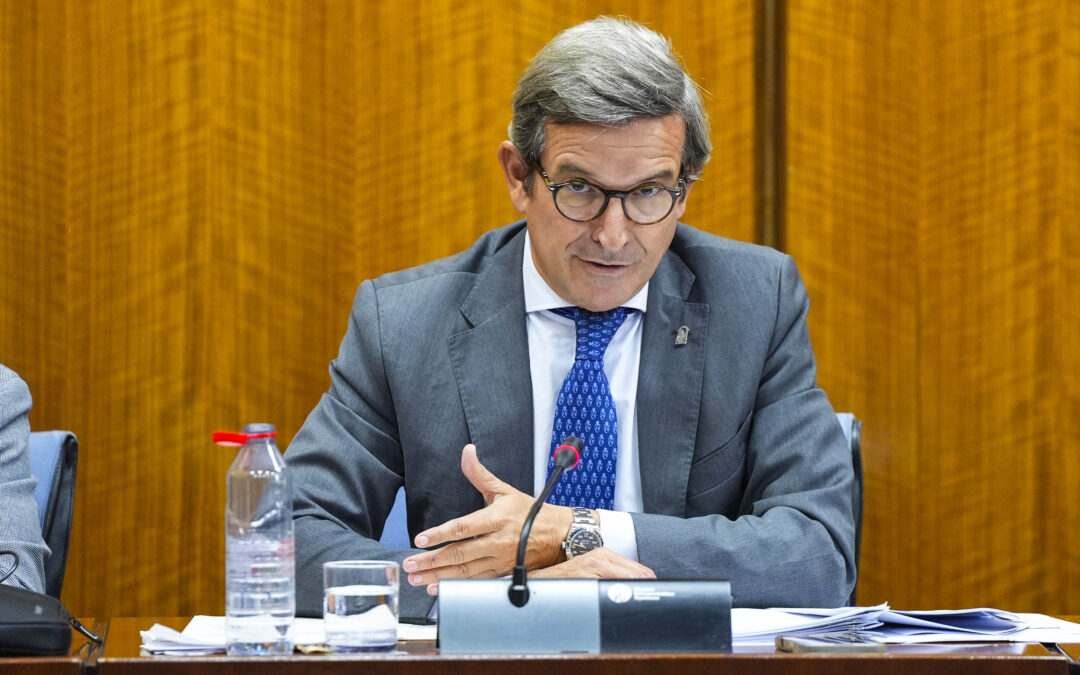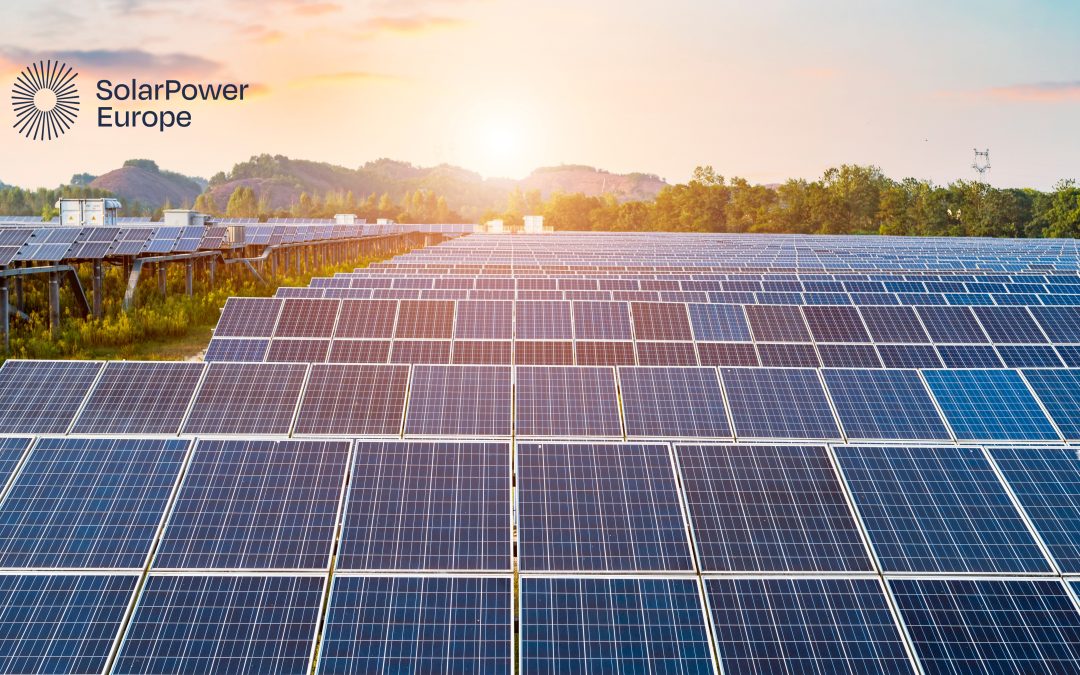Pedro González, Managing Director, states that enabling multiple physical suppliers will facilitate the signing of long-term contracts in the current context of a slowdown in the PPA market, while also enhancing industrial competitiveness.












Pedro González, Managing Director, states that enabling multiple physical suppliers will facilitate the signing of long-term contracts in the current context of a slowdown in the PPA market, while also enhancing industrial competitiveness.

The Government defines a sequential centralised model to drive the installation of 2 GW of offshore wind energy by 2030, aligned with the PNEC 2030. The renewables sector highlights regulatory stability and investment appeal.

With the Net Zero Industry Act (NZIA) coming into force, developers fear they won’t be able to meet industrial requirements without higher price caps. “Will politicians accept a higher price cap? It’s not certain, and that creates a lot of uncertainty,” says Matteo Bernard of France renouvelables. Meanwhile, France is seeking to increase its offshore wind capacity 12-fold in just a decade.

Major energy consumers are shifting from industry to data centres. What impact does this have on the renewables market? Carlos Martín Graña, Head of Operations at ENERJOIN, analyzes the current situation.

Germany’s Federal Network Agency confirmed it will uphold the full 3.443-MW volume in the onshore wind tender scheduled for 2 May 2025, despite regulatory provisions allowing for reductions in case of low participation. The maximum bid value will remain at 7.35 euro cents per kilowatt hour.

In March, Ireland’s electricity grid hit a new solar power record, with a peak of 750 MW connected to the system. The figure marks a key milestone towards the country’s 80% renewable electricity target, according to provisional data from EirGrid.

The sector calls on the EU to establish a European Fund for Wind Research & Competitiveness under the next EU budget. The Fund should safeguard the competitiveness of the European wind industry and to secure Europe’s technology sovereignty in clean tech.

The volatility of the European electricity market, intensified by renewable overcapacity and trade tensions between China and the United States, is prompting developers and investors to adopt risk hedging strategies to sustain the profitability of their assets.

In March 2025, 1,556 MW of new PPAs were signed in Europe, a 129% increase over the previous month. Spain, Italy, and Poland led the way in terms of volume, with strong private sector participation and a predominance of solar PV.

Renewable sources covered 39% of electricity demand (in March 2024, they accounted for 42.3%). Photovoltaic (+23.8%) and thermal (+18.6%) sources increased. Hydroelectric (-33.6%), geothermal (-2.4%), and wind (-7.2%) sources decreased. For the latter, this is the third consecutive month of decline.

According to a survey by Strategic Energy Europe based on data from the Ministry of Energy and Natural Resources (MASE), 2.4 GW of renewable energy projects were processed in Italy in the first three months of 2025. Wind and agrivoltaic technologies lead the portfolio, with significant growth in projects with storage.

The company, ScottishPower Renewables, has awarded an EPCIC (Engineering, Procurement, Construction, Installation and Commissioning) contract for its East Anglia TWO offshore substation and jacket foundation to HSM Offshore Energy.

This is an important initiative, as for the first time our country sets the rules for the organization of the marine space. The MSP takes into account the interactions between land and sea activities and emphasizes the consultation and co-formulation of priorities per region, through the establishment of Marine Spatial Planning Frameworks.

The Offshore TSO Collaboration has unveiled a new portfolio of cross-border projects with a 2040 horizon for a regional energy grid.The OTC Grid Map 2025, outlines over 300 GW of offshore wind capacity expected across the region, including areas within national Exclusive Economic Zones (EEZs). It includes projects like Nautilus and LionLink,

As part of preparations for Easter, the Greek Ministry of Environment and Energy brought together key stakeholders in the electricity system to monitor the implementation of production limitation measures at renewable and cogeneration plants. According to preliminary data, producer compliance reached 89%.

Joao Costeira, of Repsol; Carlos Relancio, of Galp; and Carolina Nester, of Sonnedix, will lead panels at FES Iberia 2025, to be held on June 24 in Madrid. The summit, which will bring together more than 400 executives, will also feature important partners such as Wattkraft, 360 Energy, Risen, Chemik, Yingli, and BLC Power Generation.

The second edition of the “Forum on the Integration of Storage, Renewables, and Electric Vehicles”, organized by Mobility Portal Europe and Strategic Energy Europe, will be held virtually on May 20 and 21. Leaders and experts will analyze the challenges and opportunities for accelerating the integration of renewable energy in Europe.

According to Wood Mackenzie’s latest report, the European renewable energy PPA market closed 2024 with nearly 19 GW of newly contracted capacity, led by Spain and Germany. Hybrid agreements and strong corporate demand are reshaping the outlook for 2025.

The UK Government and Ofgem have launched a reform prioritising strategic projects to fast-track the energy transition. The plan is expected to unlock £40 billion in annual private investment, following £43.7 billion already announced since July in the clean energy sector.

According to official data from Polskie Sieci Elektroenergetyczne, by March and April 2025, installed photovoltaic capacity reached 22,074 MW, while wind farms totalled 10,868 MW, marking a new national milestone. However, the rapid growth also reveals persistent imbalances in the power system, with deviations exceeding 2,000 MW at times.

The agreement warns that more than 20% of current projects in Europe are at risk of cancellation or delay. Industry experts explain that achieving the goals will depend on expanding projects, investing in larger and more efficient turbines, optimizing processes, and adopting energy storage as a strategic pillar.

Pedro González, Managing Director, states that enabling multiple physical suppliers will facilitate the signing of long-term contracts in the current context of a slowdown in the PPA market, while also enhancing industrial competitiveness.

The Government defines a sequential centralised model to drive the installation of 2 GW of offshore wind energy by 2030, aligned with the PNEC 2030. The renewables sector highlights regulatory stability and investment appeal.

With the Net Zero Industry Act (NZIA) coming into force, developers fear they won’t be able to meet industrial requirements without higher price caps. “Will politicians accept a higher price cap? It’s not certain, and that creates a lot of uncertainty,” says Matteo Bernard of France renouvelables. Meanwhile, France is seeking to increase its offshore wind capacity 12-fold in just a decade.

Major energy consumers are shifting from industry to data centres. What impact does this have on the renewables market? Carlos Martín Graña, Head of Operations at ENERJOIN, analyzes the current situation.

Germany’s Federal Network Agency confirmed it will uphold the full 3.443-MW volume in the onshore wind tender scheduled for 2 May 2025, despite regulatory provisions allowing for reductions in case of low participation. The maximum bid value will remain at 7.35 euro cents per kilowatt hour.

In March, Ireland’s electricity grid hit a new solar power record, with a peak of 750 MW connected to the system. The figure marks a key milestone towards the country’s 80% renewable electricity target, according to provisional data from EirGrid.

The sector calls on the EU to establish a European Fund for Wind Research & Competitiveness under the next EU budget. The Fund should safeguard the competitiveness of the European wind industry and to secure Europe’s technology sovereignty in clean tech.

The volatility of the European electricity market, intensified by renewable overcapacity and trade tensions between China and the United States, is prompting developers and investors to adopt risk hedging strategies to sustain the profitability of their assets.

In March 2025, 1,556 MW of new PPAs were signed in Europe, a 129% increase over the previous month. Spain, Italy, and Poland led the way in terms of volume, with strong private sector participation and a predominance of solar PV.

Renewable sources covered 39% of electricity demand (in March 2024, they accounted for 42.3%). Photovoltaic (+23.8%) and thermal (+18.6%) sources increased. Hydroelectric (-33.6%), geothermal (-2.4%), and wind (-7.2%) sources decreased. For the latter, this is the third consecutive month of decline.

According to a survey by Strategic Energy Europe based on data from the Ministry of Energy and Natural Resources (MASE), 2.4 GW of renewable energy projects were processed in Italy in the first three months of 2025. Wind and agrivoltaic technologies lead the portfolio, with significant growth in projects with storage.

The company, ScottishPower Renewables, has awarded an EPCIC (Engineering, Procurement, Construction, Installation and Commissioning) contract for its East Anglia TWO offshore substation and jacket foundation to HSM Offshore Energy.

This is an important initiative, as for the first time our country sets the rules for the organization of the marine space. The MSP takes into account the interactions between land and sea activities and emphasizes the consultation and co-formulation of priorities per region, through the establishment of Marine Spatial Planning Frameworks.

The Offshore TSO Collaboration has unveiled a new portfolio of cross-border projects with a 2040 horizon for a regional energy grid.The OTC Grid Map 2025, outlines over 300 GW of offshore wind capacity expected across the region, including areas within national Exclusive Economic Zones (EEZs). It includes projects like Nautilus and LionLink,

As part of preparations for Easter, the Greek Ministry of Environment and Energy brought together key stakeholders in the electricity system to monitor the implementation of production limitation measures at renewable and cogeneration plants. According to preliminary data, producer compliance reached 89%.

Joao Costeira, of Repsol; Carlos Relancio, of Galp; and Carolina Nester, of Sonnedix, will lead panels at FES Iberia 2025, to be held on June 24 in Madrid. The summit, which will bring together more than 400 executives, will also feature important partners such as Wattkraft, 360 Energy, Risen, Chemik, Yingli, and BLC Power Generation.

The second edition of the “Forum on the Integration of Storage, Renewables, and Electric Vehicles”, organized by Mobility Portal Europe and Strategic Energy Europe, will be held virtually on May 20 and 21. Leaders and experts will analyze the challenges and opportunities for accelerating the integration of renewable energy in Europe.

According to Wood Mackenzie’s latest report, the European renewable energy PPA market closed 2024 with nearly 19 GW of newly contracted capacity, led by Spain and Germany. Hybrid agreements and strong corporate demand are reshaping the outlook for 2025.

The UK Government and Ofgem have launched a reform prioritising strategic projects to fast-track the energy transition. The plan is expected to unlock £40 billion in annual private investment, following £43.7 billion already announced since July in the clean energy sector.

According to official data from Polskie Sieci Elektroenergetyczne, by March and April 2025, installed photovoltaic capacity reached 22,074 MW, while wind farms totalled 10,868 MW, marking a new national milestone. However, the rapid growth also reveals persistent imbalances in the power system, with deviations exceeding 2,000 MW at times.

The agreement warns that more than 20% of current projects in Europe are at risk of cancellation or delay. Industry experts explain that achieving the goals will depend on expanding projects, investing in larger and more efficient turbines, optimizing processes, and adopting energy storage as a strategic pillar.

Select the sector you
want to know more about

El consejero de Industria, Energía y Minas, Jorge Paradela, señala que es una inversión “imprescindible” y que la Junta no aceptará este “agravio”.

The paper calls for a comprehensive strategy to strengthen Europe’s energy resilience that moves beyond fossil fuel supply and builds energy security on solar, storage, flexibility and electrification.

New global progress report flags bottlenecks in investment, grids and supply chains, urging governments for bolder renewable targets before COP30.